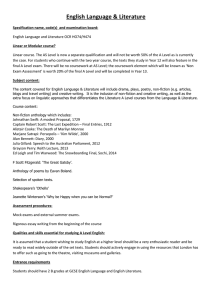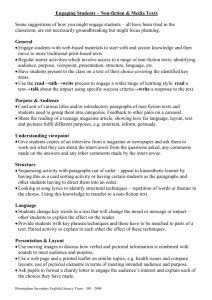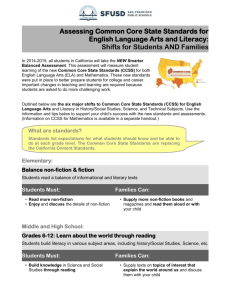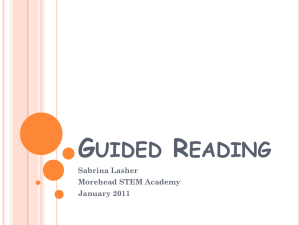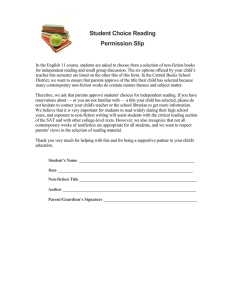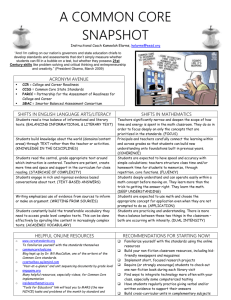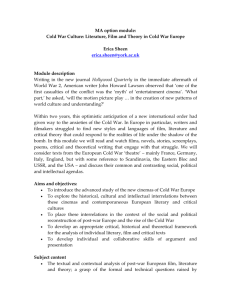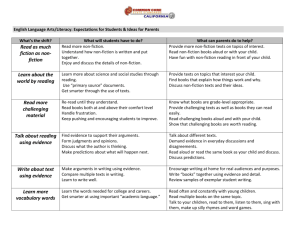REEL-LIVES HUMAN RIGHTS CURRICULUM
advertisement
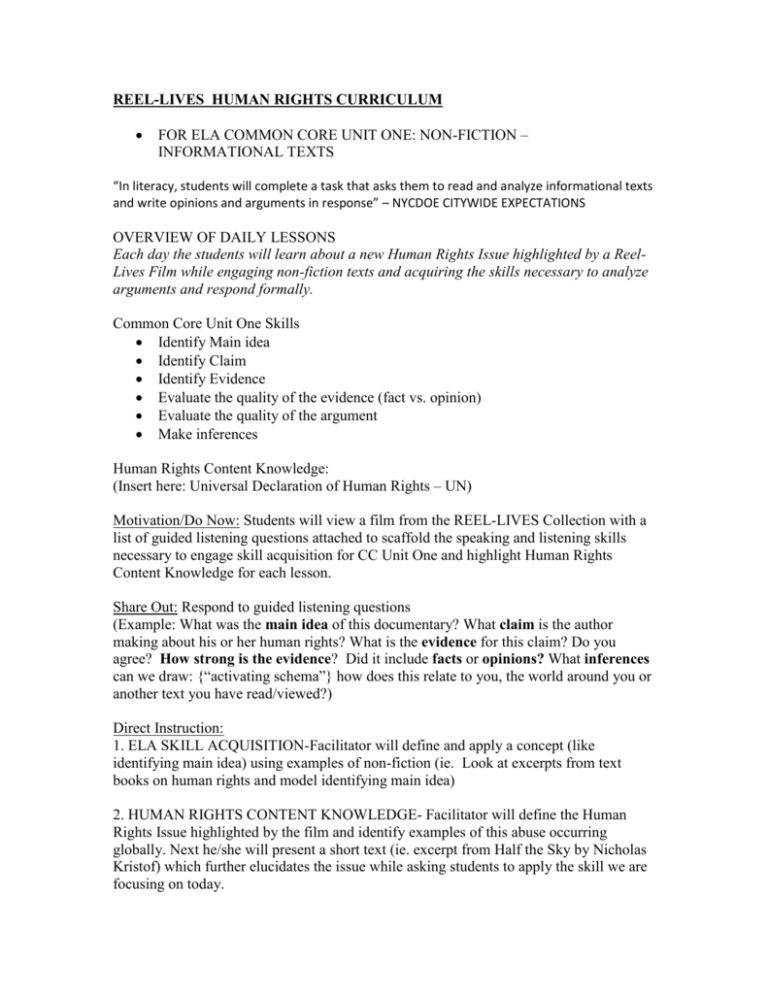
REEL-LIVES HUMAN RIGHTS CURRICULUM
FOR ELA COMMON CORE UNIT ONE: NON-FICTION –
INFORMATIONAL TEXTS
“In literacy, students will complete a task that asks them to read and analyze informational texts
and write opinions and arguments in response” – NYCDOE CITYWIDE EXPECTATIONS
OVERVIEW OF DAILY LESSONS
Each day the students will learn about a new Human Rights Issue highlighted by a ReelLives Film while engaging non-fiction texts and acquiring the skills necessary to analyze
arguments and respond formally.
Common Core Unit One Skills
Identify Main idea
Identify Claim
Identify Evidence
Evaluate the quality of the evidence (fact vs. opinion)
Evaluate the quality of the argument
Make inferences
Human Rights Content Knowledge:
(Insert here: Universal Declaration of Human Rights – UN)
Motivation/Do Now: Students will view a film from the REEL-LIVES Collection with a
list of guided listening questions attached to scaffold the speaking and listening skills
necessary to engage skill acquisition for CC Unit One and highlight Human Rights
Content Knowledge for each lesson.
Share Out: Respond to guided listening questions
(Example: What was the main idea of this documentary? What claim is the author
making about his or her human rights? What is the evidence for this claim? Do you
agree? How strong is the evidence? Did it include facts or opinions? What inferences
can we draw: {“activating schema”} how does this relate to you, the world around you or
another text you have read/viewed?)
Direct Instruction:
1. ELA SKILL ACQUISITION-Facilitator will define and apply a concept (like
identifying main idea) using examples of non-fiction (ie. Look at excerpts from text
books on human rights and model identifying main idea)
2. HUMAN RIGHTS CONTENT KNOWLEDGE- Facilitator will define the Human
Rights Issue highlighted by the film and identify examples of this abuse occurring
globally. Next he/she will present a short text (ie. excerpt from Half the Sky by Nicholas
Kristof) which further elucidates the issue while asking students to apply the skill we are
focusing on today.
Group Work:
Read Aloud in whole group or independently using guided reading worksheets (in order
to scaffold skill and content knowledge acquisition)
Share Out/Assessment:
(Formal Assessment)- Responses on worksheet will evidence content knowledge and
skill acquisition
(Informal Assessment)- Student will share answers with the class and engage in a
discussion about where they see these abuses in their own lives, the world at large or in
other non-fiction texts.
HW/Secondary Formal Assessment:
Students are given a second text and worksheet which solidifies the skills and content
taught in today’s lesson.
Or (perhaps better) students respond by writing opinion pieces regarding the film or their
relation to it (work is based on class lesson and discussions) – this will go a long way if
we include a primer lesson on essay writing.
